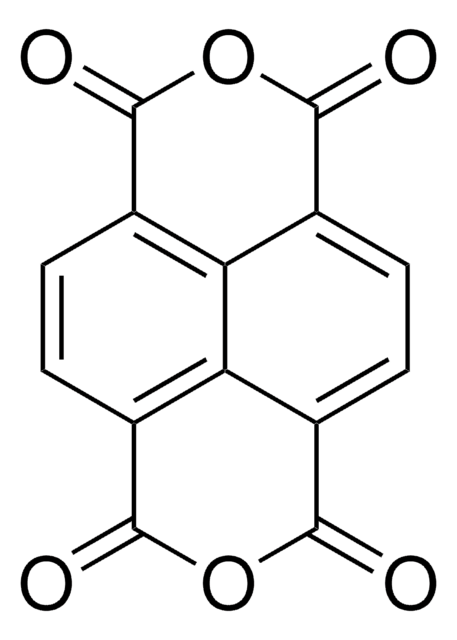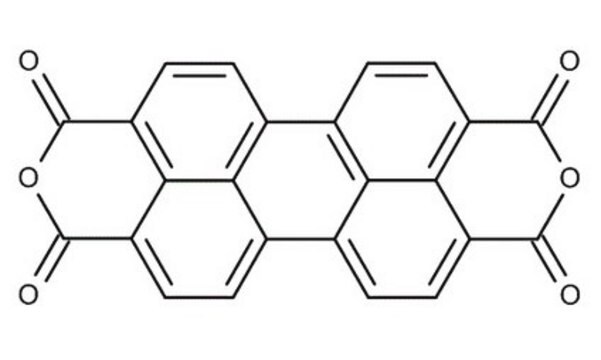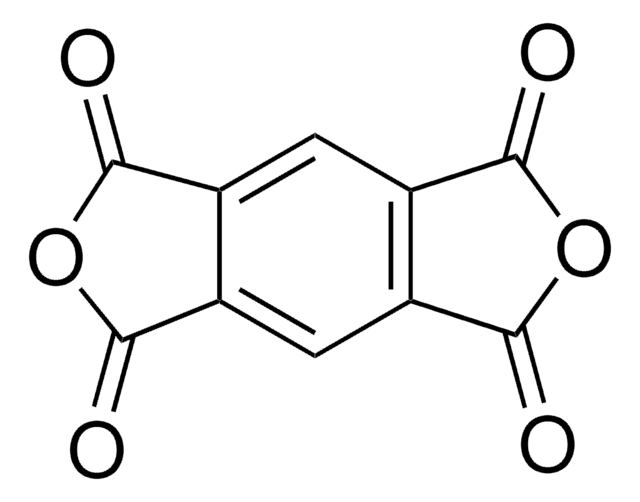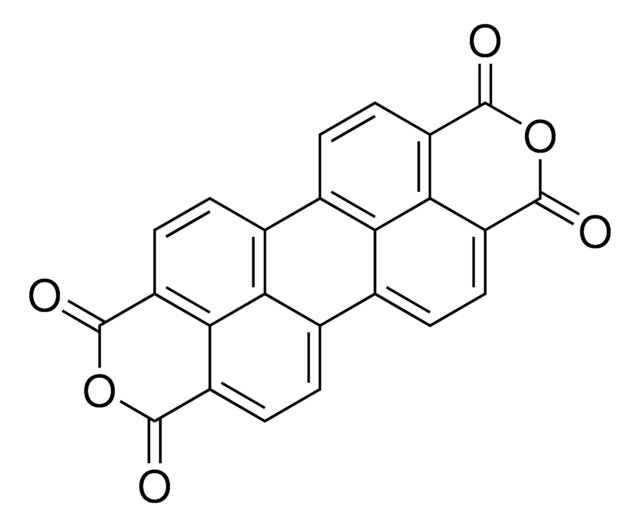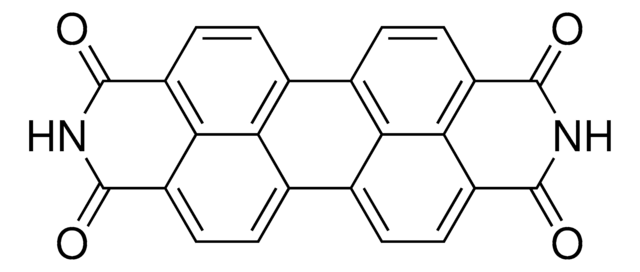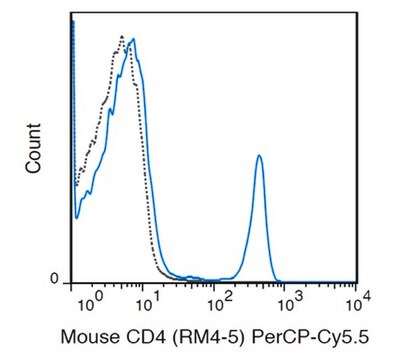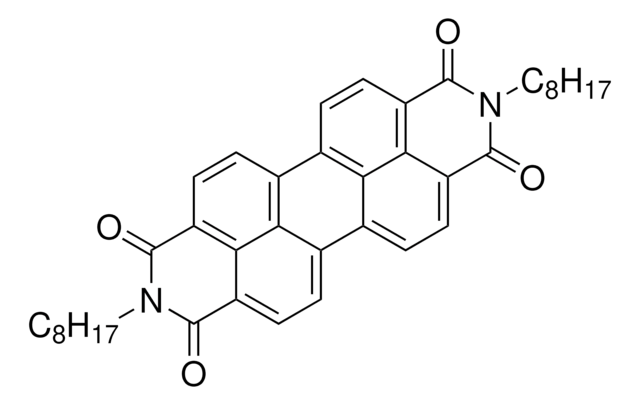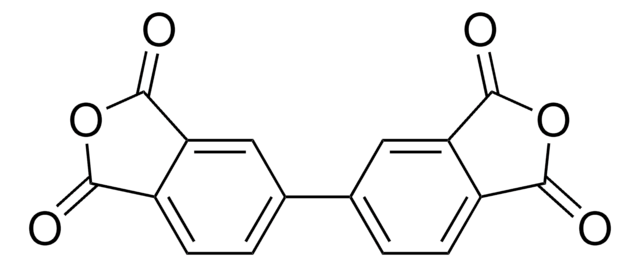P11255
PTCDA
97%
Sinónimos:
Perylene-3,4,9,10-tetracarboxylic dianhydride, Pigment Red 224
About This Item
Productos recomendados
description
Band gap: 2.1 eV
Quality Level
assay
97%
form
powder
mp
>300 °C
orbital energy
HOMO -6.8 eV
LUMO -4.7 eV
OPV device performance
ITO/CuPc/PTCDA/In
semiconductor properties
N-type (mobility=10−4 cm2/V·s)
InChI
1S/C24H8O6/c25-21-13-5-1-9-10-2-6-15-20-16(24(28)30-23(15)27)8-4-12(18(10)20)11-3-7-14(22(26)29-21)19(13)17(9)11/h1-8H
InChI key
CLYVDMAATCIVBF-UHFFFAOYSA-N
¿Está buscando productos similares? Visita Guía de comparación de productos
General description
Application
Storage Class
11 - Combustible Solids
wgk_germany
WGK 1
ppe
dust mask type N95 (US), Eyeshields, Gloves
Elija entre una de las versiones más recientes:
¿Ya tiene este producto?
Encuentre la documentación para los productos que ha comprado recientemente en la Biblioteca de documentos.
Artículos
Fabrication procedure of organic field effect transistor device using a soluble pentacene precursor.
Professor Chen (Nankai University, China) and his team explain the strategies behind their recent record-breaking organic solar cells, reaching a power conversion efficiency of 17.3%.
Nuestro equipo de científicos tiene experiencia en todas las áreas de investigación: Ciencias de la vida, Ciencia de los materiales, Síntesis química, Cromatografía, Analítica y muchas otras.
Póngase en contacto con el Servicio técnico